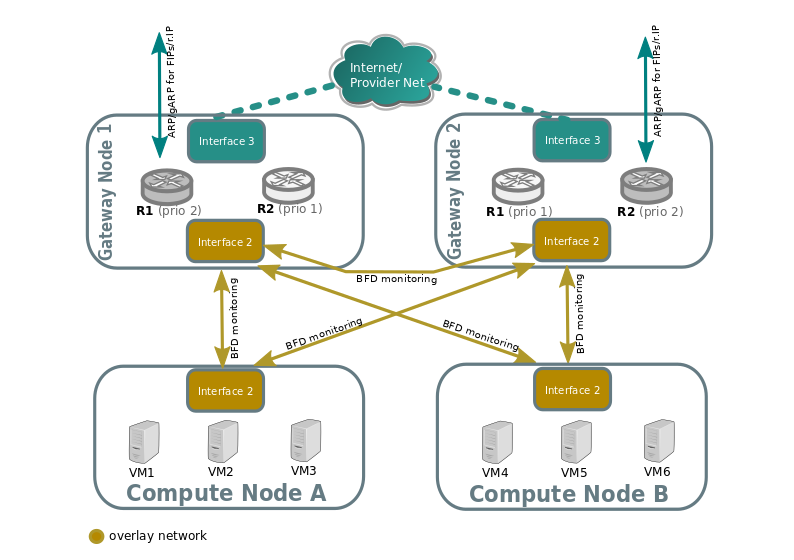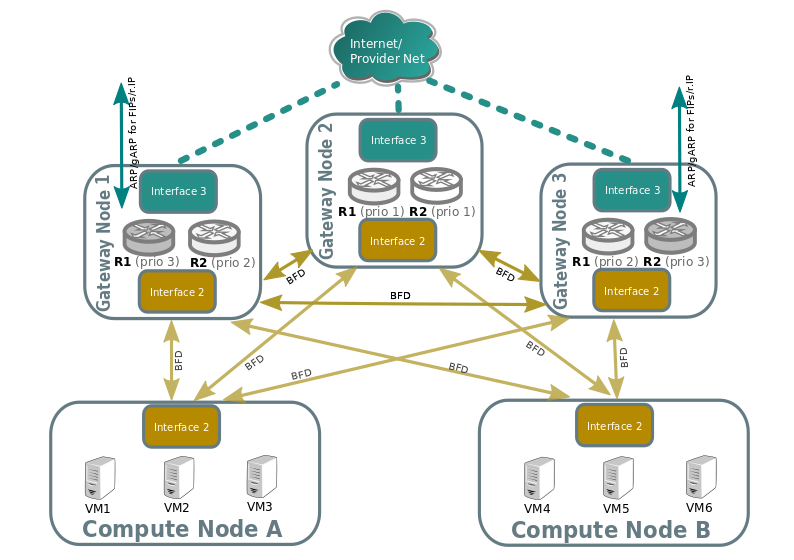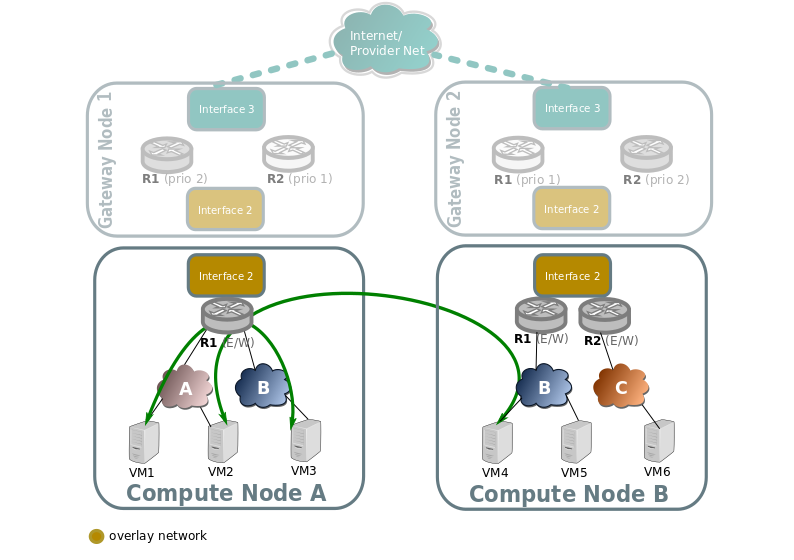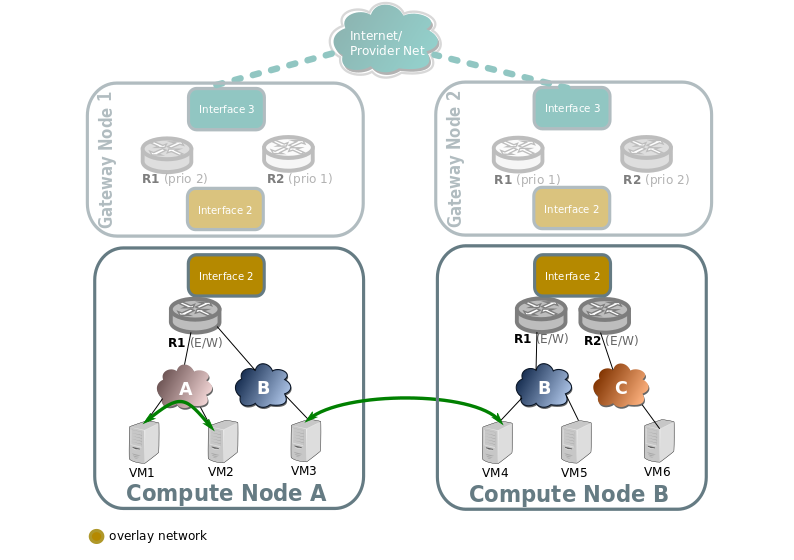It also adds 2 sample of devstack's local.conf file for deploying Neutron with OVN mechanism driver. Needed to create PNG files out of the existing SVG ones in order to pass the pdf doc build. Co-Authored-By: Aaron Rosen <aaronorosen@gmail.com> Co-Authored-By: Akihiro Motoki <amotoki@gmail.com> Co-Authored-By: Amitabha Biswas <abiswas@us.ibm.com> Co-Authored-By: Andreas Jaeger <aj@suse.com> Co-Authored-By: Anh Tran <anhtt@vn.fujitsu.com> Co-Authored-By: Assaf Muller <amuller@redhat.com> Co-Authored-By: Babu Shanmugam <bschanmu@redhat.com> Co-Authored-By: Brian Haley <bhaley@redhat.com> Co-Authored-By: Chandra S Vejendla <csvejend@us.ibm.com> Co-Authored-By: Daniel Alvarez <dalvarez@redhat.com> Co-Authored-By: Dong Jun <dongj@dtdream.com> Co-Authored-By: Emilien Macchi <emilien@redhat.com> Co-Authored-By: Flavio Fernandes <flavio@flaviof.com> Co-Authored-By: Gal Sagie <gal.sagie@huawei.com> Co-Authored-By: Gary Kotton <gkotton@vmware.com> Co-Authored-By: Guoshuai Li <ligs@dtdream.com> Co-Authored-By: Han Zhou <zhouhan@gmail.com> Co-Authored-By: Hong Hui Xiao <xiaohhui@cn.ibm.com> Co-Authored-By: Jakub Libosvar <libosvar@redhat.com> Co-Authored-By: Jeff Feng <jianhua@us.ibm.com> Co-Authored-By: Jenkins <jenkins@review.openstack.org> Co-Authored-By: Jonathan Herlin <jonte@jherlin.se> Co-Authored-By: Kyle Mestery <mestery@mestery.com> Co-Authored-By: Le Hou <houl7@chinaunicom.cn> Co-Authored-By: Lucas Alvares Gomes <lucasagomes@gmail.com> Co-Authored-By: Matthew Kassawara <mkassawara@gmail.com> Co-Authored-By: Miguel Angel Ajo <majopela@redhat.com> Co-Authored-By: Murali Rangachari <muralirdev@gmail.com> Co-Authored-By: Numan Siddique <nusiddiq@redhat.com> Co-Authored-By: Reedip <rbanerje@redhat.com> Co-Authored-By: Richard Theis <rtheis@us.ibm.com> Co-Authored-By: Russell Bryant <rbryant@redhat.com> Co-Authored-By: Ryan Moats <rmoats@us.ibm.com> Co-Authored-By: Simon Pasquier <spasquier@mirantis.com> Co-Authored-By: Terry Wilson <twilson@redhat.com> Co-Authored-By: Tong Li <litong01@us.ibm.com> Co-Authored-By: Yunxiang Tao <taoyunxiang@cmss.chinamobile.com> Co-Authored-By: Yushiro FURUKAWA <y.furukawa_2@jp.fujitsu.com> Co-Authored-By: chen-li <shchenli@cn.ibm.com> Co-Authored-By: gong yong sheng <gong.yongsheng@99cloud.net> Co-Authored-By: lidong <lidongbj@inspur.com> Co-Authored-By: lzklibj <lzklibj@cn.ibm.com> Co-Authored-By: melissaml <ma.lei@99cloud.net> Co-Authored-By: pengyuesheng <pengyuesheng@gohighsec.com> Co-Authored-By: reedip <rbanerje@redhat.com> Co-Authored-By: venkata anil <anilvenkata@redhat.com> Co-Authored-By: xurong00037997 <xu.rong@zte.com.cn> Co-Authored-By: zhangdebo <zhangdebo@inspur.com> Co-Authored-By: zhangyanxian <zhang.yanxian@zte.com.cn> Co-Authored-By: zhangyanxian <zhangyanxianmail@163.com> Change-Id: Ia121ec5146c1d35b3282e44fd1eb98932939ea8c Partially-Implements: blueprint neutron-ovn-merge
6.2 KiB
Routing
North/South
The different configurations are detailed in the /admin/ovn/refarch/refarch
Non distributed FIP
North/South traffic flows through the active chassis for each router for SNAT traffic, and also for FIPs.
Distributed Floating IP
In the following diagram we can see how VMs with no Floating IP (VM1, VM6) still communicate throught the gateway nodes using SNAT on the edge routers R1 and R2.
While VM3, VM4, and VM5 have an assigned floating IP, and it's traffic flows directly through the local provider bridge/interface to the external network.
L3HA support
Ovn driver implements L3 high availability in a transparent way. You
don't need to enable any config flags. As soon as you have more than one
chassis capable of acting as an l3 gateway to the specific external
network attached to the router it will schedule the router gateway port
to multiple chassis, making use of the gateway_chassis
column on OVN's Logical_Router_Port table.
In order to have external connectivity, either:
- Some gateway nodes have
ovn-cms-optionswith the valueenable-chassis-as-gwin Open_vSwitch table's external_ids column, or - if no gateway node exists with the external ids column set with that value, then all nodes would be eligible to host gateway chassis.
- Example to how to enabled chassis to host gateways:
-
$ ovs-vsctl set open . external-ids:ovn-cms-options="enable-chassis-as-gw"
At the low level, functionality is all implemented mostly by OpenFlow rules with bundle active_passive outputs. The ARP responder and router enablement/disablement is handled by ovn-controller. Gratuitous ARPs for FIPs and router external addresses are periodically sent by ovn-controller itself.
BFD monitoring
OVN monitors the availability of the chassis via the BFD protocol, which is encapsulated on top of the Geneve tunnels established from chassis to chassis.
Each chassis that is marked as a gateway chassis will monitor all the other gateway chassis in the deployment as well as compute node chassis, to let the gateways enable/disable routing of packets and ARP responses / announcements.
Each compute node chassis will monitor each gateway chassis via BFD to automatically steer external traffic (snat/dnat) through the active chassis for a given router.
The gateway nodes monitor each other in star topology. Compute nodes don't monitor each other because that's not necessary.
Failover (detected by BFD)
Look at the following example:
Compute nodes BFD monitoring of the gateway nodes will detect that tunnel endpoint going to gateway node 1 is down, so. So traffic output that needs to get into the external network through the router will be directed to the lower priority chassis for R1. R2 stays the same because Gateway Node 2 was already the highest priority chassis for R2.
Gateway node 2 will detect that tunnel endpoint to gateway node 1 is down, so it will become responsible for the external leg of R1, and it's ovn-controller will populate flows for the external ARP responder, traffic forwarding (N/S) and periodic gratuitous ARPs.
Gateway node 2 will also bind the external port of the router (represented as a chassis-redirect port on the South Bound database).
If Gateway node 1 is still alive, failure over interface 2 will be detected because it's not seeing any other nodes.
No mechanisms are still present to detect external network failure, so as good practice to detect network failure we recommend that all interfaces are handled over a single bonded interface with VLANs.
- Supported failure modes are:
-
- gateway chassis becomes disconnected from network (tunneling interface)
- ovs-vswitchd is stopped (it's responsible for BFD signaling)
- ovn-controller is stopped, as ovn-controller will remove himself as a registered chassis.
Note
As a side note, it's also important to understand, that as for VRRP or CARP protocols, this detection mechanism only works for link failures, but not for routing failures.
Failback
L3HA behaviour is preemptive in OVN (at least for the time being) since that would balance back the routers to the original chassis, avoiding any of the gateway nodes becoming a bottleneck.
East/West
East/West traffic on ovn driver is completely distributed, that means that routing will happen internally on the compute nodes without the need to go through the gateway nodes.
Traffic going through a virtual router, different subnets
Traffic going through a virtual router, and going from a virtual network/subnet to another will flow directly from compute to compute node encapsulated as usual, while all the routing operations like decreasing TTL or switching MAC addresses will be handled in OpenFlow at the source host of the packet.
Traffic across the same subnet
Traffic across a subnet will happen as described in the following diagram, although this kind of communication doesn't make use of routing at all (just encapsulation) it's been included for completeness.
Traffic goes directly from instance to instance through br-int in the case of both instances living in the same host (VM1 and VM2), or via encapsulation when living on different hosts (VM3 and VM4).






